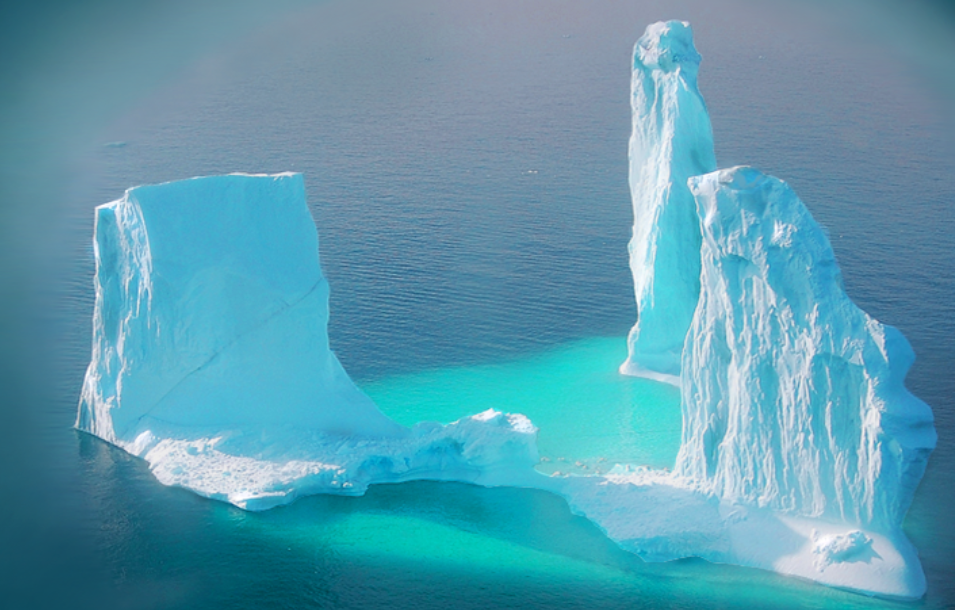
As US Undermines UN Climate Talks, Polar Regions Warm & Weep
As the US and other big polluters are accused of deliberately undermining the UN climate talks and promoting climate denial, there are further grave warnings from the Arctic and Antarctic, regarding the impact that climate change is having on our polar regions.

C: NOAA
As the US and other big polluters are accused of deliberately undermining the UN climate talks and promoting climate denial, there are further grave warnings from the Arctic and Antarctica, regarding the impact that climate change is having on our polar regions.
Henry Puna, the prime minister of the Cook Islands told the UN conference, in an attack on the US: “I am scared for my children’s future, and for the future of generations to come. Parties have called for action, but it is evident our current efforts are not enough. Some are not willing to accept the stark realities.”
And the stark realities just got a whole lot starker. The latest Annual Report Card from NOAA on the state of the Arctic makes grim reading, as the region continues to warm significantly faster than everywhere else, causing unprecedented changes to the ice cover and the state of the wildlife.
According to the Report card, “Surface air temperatures in the Arctic continued to warm at twice the rate relative to the rest of the globe.” It adds that: “The Arctic air temperatures for the past five years (2014-18) have exceeded all previous records since 1900”.
The increase in temperatures is having an impact on the ice cover, especially the old ice which helps glue the ice together. “In 2018, old ice constituted less than 1% of the ice pack, meaning that very old Arctic ice has declined by 95% in the last 33 years”.
“The younger the ice, the thinner the ice, the easier it is to go away,” Don Perovich, a scientist at Dartmouth, who coordinated the sea ice section of this year’s report, told the Washington Post.
There is grim news for the caribou, too. “Despite increase of vegetation available for grazing, herd populations of caribou and wild reindeer across the Arctic tundra have declined by nearly 50% over the last two decades.”
This means the numbers have declined from 4.7 million to 2.1 million over the last two decades.
As I have written before what happens in the Arctic should concern us all: As the Washington Post notes: “If the Arctic begins to experience entirely ice-free summers, scientists say, the planet will warm even more, as the dark ocean water absorbs large amounts of solar heating that used to be deflected by the cover of ice.”
Walt Meier, a sea ice expert at the National Snow and Ice Data Center, tells the Post: “The Arctic is an indication of what’s coming to the rest of the globe. In the Arctic Ocean, a difference of 2 degrees can be huge. If it goes from 31 Fahrenheit to 33 Fahrenheit, you’re going from ice skating to swimming. … the Arctic is an early warning system for the climate.”
Thomas Mote, a research scientist at the University of Georgia who authored another part of the report, also told CNN: “What starts in the Arctic isn’t confined there. Changes in sea ice influence ocean currents and the jet stream in ways that can affect weather in lower latitudes, including the United States and Europe.”
Meanwhile the news from Antarctica is just as bad, with alarm bells are coming from the remote East Antarctica region where glaciers spanning an eighth of the coastline are melting.
The melting of these glaciers has long been seen as representing a doomsday scenario as they would increase sea level rise by metres, if not tens of metres.
Chris Fogwill, a professor at Keele University in England, told the Guardian: “The finding has very serious repercussions for climate change and particularly sea-level rise. It has the potential to mean that our sea-level projections could be [in] an order of magnitude higher than we’re anticipating.”
